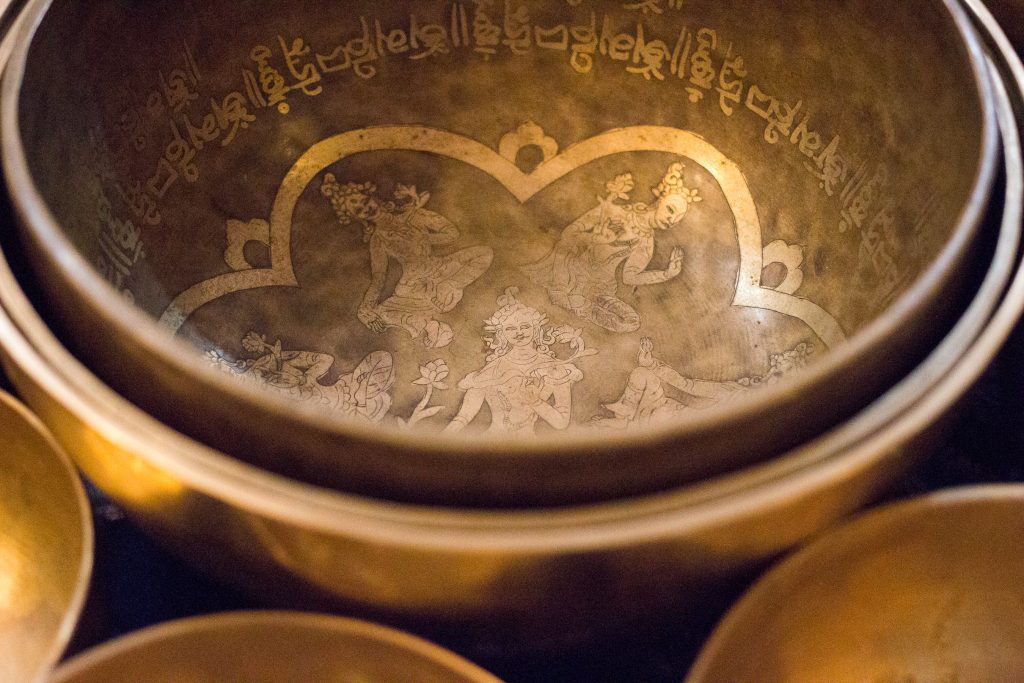Himalayan Singing Bowls

Himalayan Singing Bowls, also known as Tibetan Singing Bowls or just Singing Bowls, are ancient instruments that have been used for centuries in the Himalayan region, particularly in Tibet, Nepal, Bhutan, and India. These bowls are revered for their unique sound and are employed for various purposes, including meditation, relaxation, and healing. Here’s an overview of Himalayan Singing Bowls:
- Origin and History:
- Himalayan Singing Bowls have a rich history dating back to the 8th to 12th centuries. They are believed to have originated in the Himalayan region, particularly in Tibet.
- Traditionally, these bowls were crafted using a blend of metals, including copper, tin, zinc, iron, silver, and gold.
- Construction:
- Himalayan Singing Bowls are handcrafted by skilled artisans using a combination of metals in varying proportions.
- The bowls are typically characterized by a flat base, a rounded or flared rim, and a smooth surface. Some bowls may have decorative elements or engravings.
- Sound Production:
- The distinctive sound of a Himalayan Singing Bowl is produced by either striking the bowl or rubbing a mallet around its rim.
- When played, the bowls produce resonant, harmonic tones with a rich and soothing quality. The sound is often described as ethereal, meditative, and therapeutic.
- Healing and Meditation:
- Himalayan Singing Bowls are widely used for healing practices and meditation. The vibrations and harmonics produced by the bowls are believed to have a calming effect on the mind and body.
- Sound therapy with singing bowls is thought to promote relaxation, reduce stress, balance energy, and facilitate healing on a holistic level.
- Chakra Balancing:
- Practitioners often use Himalayan Singing Bowls for chakra balancing. Each bowl is associated with a specific chakra, and the sound vibrations are believed to align and harmonize these energy centers.
- Cultural and Spiritual Significance:
- Singing Bowls are deeply rooted in Himalayan and Tibetan culture and are often used in religious ceremonies, rituals, and meditation practices.
- Some bowls are considered sacred and are passed down through generations.
- Selecting and Playing:
- When choosing a singing bowl, consider factors such as size, thickness, and the quality of metals used. Bowls come in various sizes, each producing a unique sound.
- To play the bowl, either gently strike it with a mallet or rub the rim in a circular motion with the mallet to produce sustained vibrations.
- Learning Resources:
- Numerous books, online tutorials, and workshops are available for those interested in learning more about playing and incorporating Himalayan Singing Bowls into their practices.
- Appreciation and Collecting:
- Many people appreciate Himalayan Singing Bowls for their aesthetic qualities and collect them as art pieces. Antique and high-quality bowls are often sought after by collectors.
Himalayan Singing Bowls offer a beautiful and therapeutic way to engage with sound for meditation, relaxation, and healing. Whether you’re a practitioner, collector, or someone interested in exploring the profound effects of sound, these ancient instruments can bring a sense of tranquility and balance to your life.
Tagged Himalayan Singing BOwls, Learn, Singing Bowls

